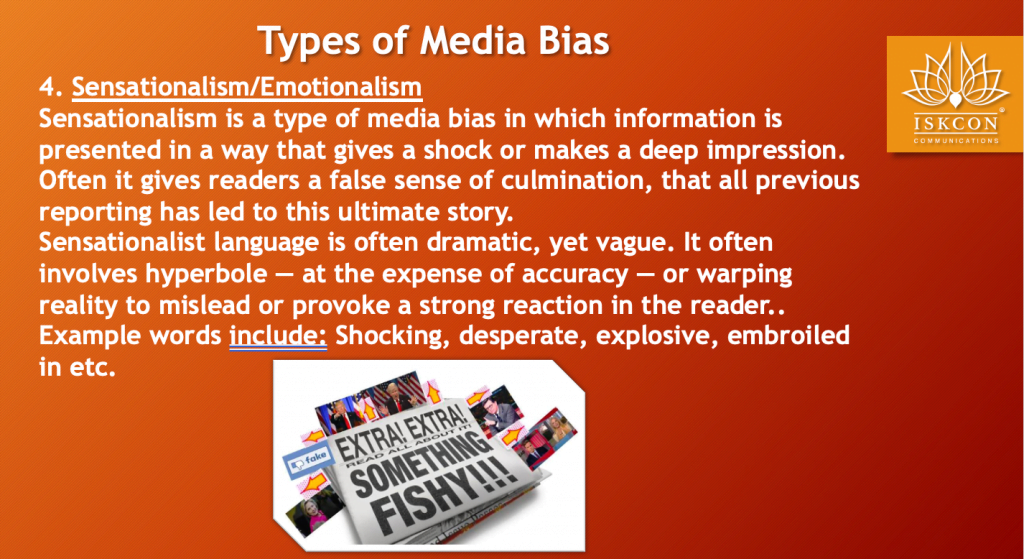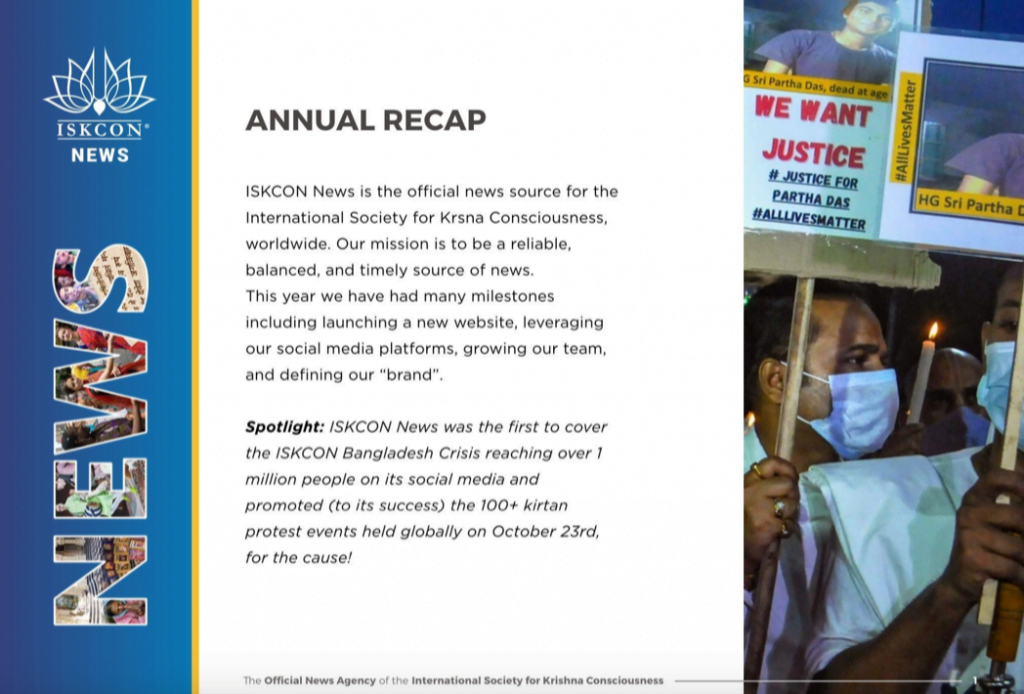Recap of ISKCON Communications Global Conference
By ISKCON News Staff | Jan 22, 2022

Understanding Different Perspectives of Srila Prabhupada’s Statements
Recap of ISKCON Communications Global Conference
More than 100 leaders and devotees doing communications services from around the globe including India, the US, the UK, South Africa, and Europe joined the online conference on Saturday, January 22nd.
The headline event for the conference, “Reconciling Different Perspectives on Srila Prabhupada’s Statements”, by Radhika Raman das (Utah State University Professor, Vaishnava scholar, and author) dove into hermeneutics (or mimamsa), the theory and method of interpretation; how to understand statements from scripture.
“The same text can mean very different things, based on the understanding or interpretation of the reader/listener”, he said. The perspective of the reader/listener does make a difference in the interpretation and “not all interpretations are made equal and every tradition creates boundaries of what is considered acceptable or not,” he said.

Radhika Raman das used a Christian proverb, Matthew 5, as an example. Applying the Christian interpretations on this proverb within the bounds of the tradition radically differs from say a Marxist lens, as it no longer fits within the bounds of the tradition. An individual’s reading/hearing brings one’s own historical context and affects how one hears/reads. Therefore one must be self-reflective, he suggested.
A few scholarly principles Radhika Raman das left for everyone to take away for reading and understanding Srila Prabhupada and the acharya’s statements:
- Take a statement or quote within the entirety of the body of Srila Prabhupada’s and the acharya’s writings and behavior. Each statement or quote does not stand alone. The text (whole) and the quote or statement (part) must be understood together.
- Understanding the statements within the time, place, and circumstance. An acharya comes because something needs to be changed in the world, and therefore responds to and acts in sync to the historical context. The acharya and sastra are not controlled by their contexts but instead reflect and respond to these contexts. The work of both an avatar and acharya is to work within the context as well as push the boundaries of the context.
- Understanding Srila Prabhupada within the Vaishnava tradition and the acharyas as well as the Vaishnava tradition and acharyas in relation to Srila Prabhupada. The goal of interpreting and understanding the text is not to start and finish with one or the other but look at both within the view a fluid perspective that brings appreciation for both.
ISKCON’s Governing Body Commission (GBC) has a Hermeneutics Committee that studies such statements within the hermeneutical principles, which Radhika Raman das is a member of. There is a course on this is offered for anyone to take or for a whole yatra by contacting Urmila Dasi: urmiladevidasi@gmail.com
Other topics covered during the conference included: an overview of ISKCON Communications by Anuttama das, GBC Member and Global Minister of Communications, “Identifying Bias in News Media” by Madan Gopal das, Co-Director of Communications North American and how this affects the ability to decipher the information.

Updates from the Communications Global team on the Bangladesh Crisis from Yudhistir Govinda das and Bhakta das, Director of Communications of India and Australia, and ISKCON New’s new website and management led by Managing Editor, Kamala Radha dasi.
















